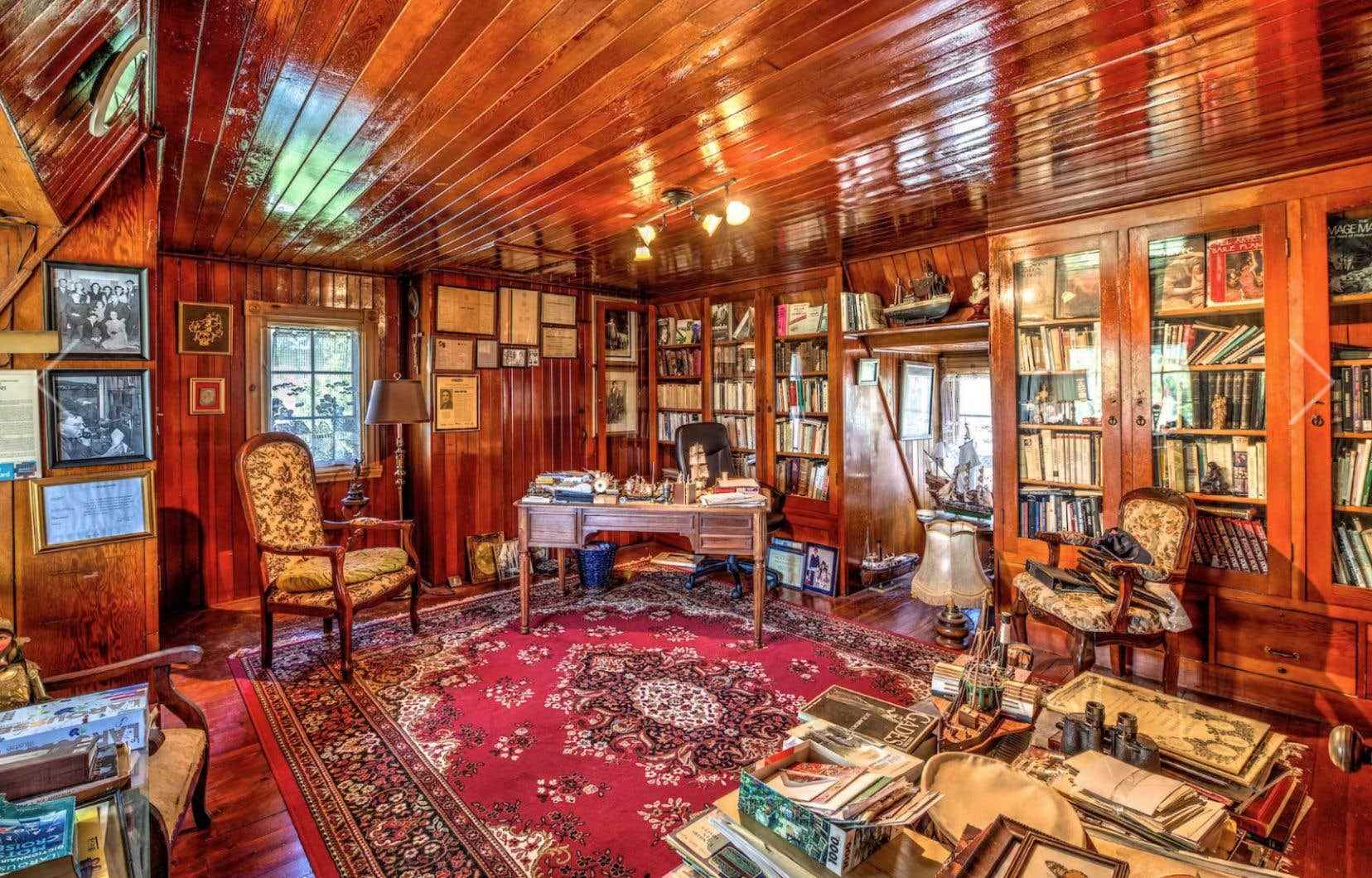The house of Claude-Henri Grignon, the author ofA man and his sinknown on screen as the Beautiful stories from the pays d’en hautlooking for a taker.
The house has been on sale since late spring in Sainte-Adèle, a city of which the writer was mayor for a long time, while being one of the most famous writers in Quebec. The wooden house that Grignon lived in dates from 1851. It is in fact one of the oldest in the area.
“Since the death of Mr. Grignon, the house has known three owners”, explains to the To have to Stéfany Lavigne, real estate broker. “The roof has just been repainted in bright green, as the heritage envelope of the house calls for. You can’t touch the outside. »
On the other hand, the interior of this old house has been considerably altered over time, according to the appetites of the moment for new forms of interior design. “There are still the floors, the staircase, the fireplace and the library that are original,” says Ms.me Vine. This 19th century residencee century retains some elements of English colonial and neoclassical architecture that inspired it. The city of Sainte-Adèle cited the residence in 2019 only in order to ensure its legal protection.
In the room housing the library is the office where Claude-Henri Grignon sat to work on his manuscripts, answer his voluminous mail and occasionally receive visitors. This room is covered with wood panelling, both the walls and the ceilings. Built-in bookcase units, whose shelves are protected by glass doors, once housed a writer’s books.
Like the scholars of his generation, he willingly had them bound, at his pleasure. On the wall, in addition to an iron crucifix, were framed photos of some of the figures who made up his personal pantheon, including Olivar Asselin and Charles Maurras, placed above his fat typist.
Claude-Henri Grignon lived in this house on rue Morin from 1937 until his death in 1976. When he moved into this large house with sixteen rooms, his flagship work was already known to a wide audience. .
A man and his sin was published in 1933. A revised version appeared in 1935. In the midst of an economic crisis and at a time when conservative nationalism was at the forefront, the book was a great success. It will be adapted to the theater, to the radio, then possibly to the screen.
Over time, the importance of the book is undeniable. This work is constantly revisited.
the pamphleteer
From 1936, Grignon will write pamphlets under the pseudonym of Valdombre, although the identity of the author is then in no doubt for anyone in the small politico-literary milieu of the time. After working for a time at the Ministry of Colonization, he stands on his own two feet. On the radio, an audience will hear him for years in talks of his own.
These sulphurous, violently reactionary pamphlets argue that the influence of the Church does not go far enough and that the conservatism of Duplessis is suspected of giving itself too much latitude. He even suspects him of adopting manners on the side of Karl Marx or Lenin. Grignon growls. To be French Canadians, there is only one way for him: to be passionately Catholic, in the name of a story that is close to the novel, of a mystique to be maintained even if it means taking liberties with the facts. He never ceases to brush up on the work of cassocked historian Lionel Groulx.
The pamphleteer Grignon, by allowing himself all the verbal excesses, defends in short an idea of the truth which has no other measure than his own. The truth, to hear him, is he who is the holder, imagining his pen as a propagating beam of irrefutable truths since it is he who affirms it. “The light is one, perpendicular, brutal and lightning”, writes this spirit firmly opposed to the ideas of the philosophers of the Lights.
The municipality of Sainte-Adèle placed a commemorative bronze plaque on the house in 1983. The house is still looking for a buyer. According to the Répertoire du patrimoine culturel du Québec, the house is located in what was called the “top of the village”, the historic sector where there are houses more than a hundred years old that border Lac Rond. This building is one of the only vestiges of Adele’s past, notes the state website. In addition, it was home to one of Quebec’s great writers, Claude-Henri Grignon, for most of his life.
Born in 1894 in Sainte-Adèle, Grignon is the son of Wilfrid Grignon, a veterinarian who was one of the builders and mayor of Sainte-Adèle. His son will also be mayor of the place, establishing a sort of family dynasty in this village.
